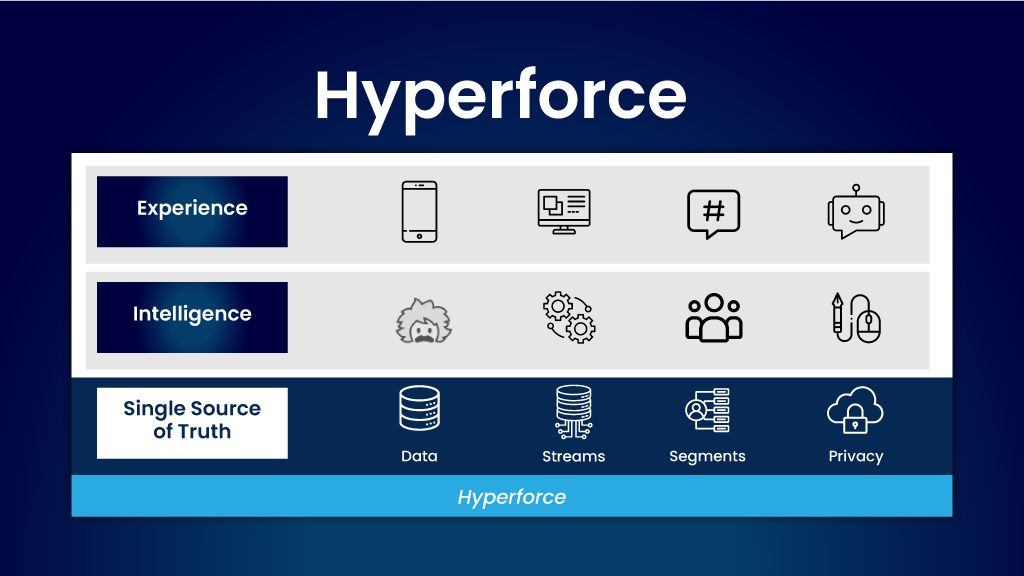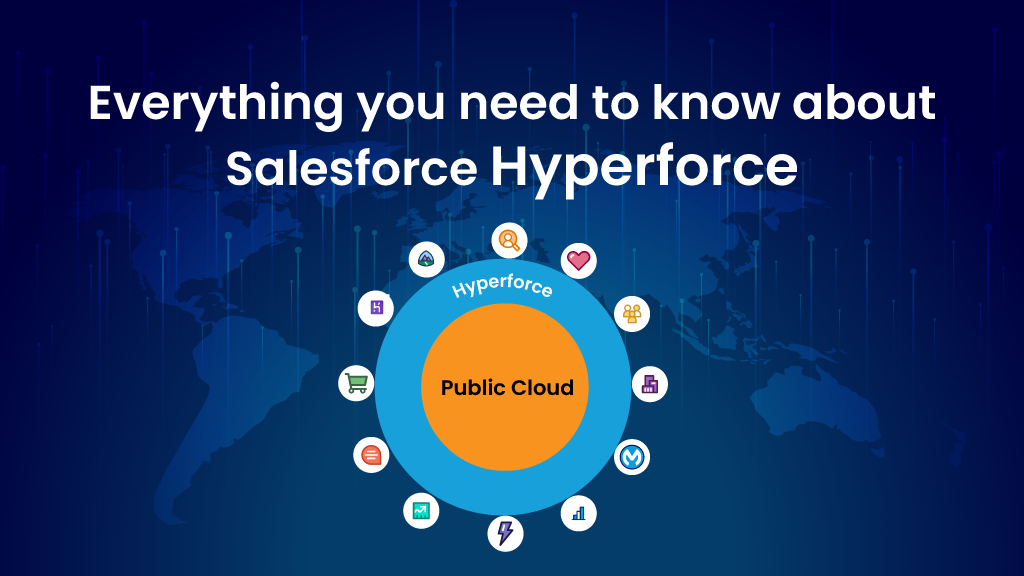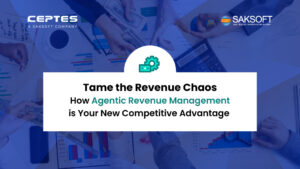The world of technology moves fast—like, blink-and-you-miss-it fast!
As businesses expand and data grows exponentially, companies need infrastructure that can keep up without sacrificing security or performance. That’s where Salesforce Hyperforce comes in. It’s Salesforce’s next-gen platform, designed to give businesses the power, flexibility, and security they need.
But what exactly is Hyperforce in Salesforce, and why is everyone talking about it? Let’s dive into the details.
What Is Salesforce Hyperforce?
At its core, Salesforce Hyperforce is a reimagined version of the Salesforce infrastructure architecture built to run on major public cloud providers like Amazon Web Services (AWS), Microsoft Azure, and Google Cloud. What this means for businesses is that Salesforce can now scale more quickly, deploy globally, and comply with local data laws in ways it couldn’t before.
Previously, Salesforce relied on its own infrastructure, which worked great but had limits on flexibility and region-specific data storage. Hyperforce is the next-generation serverless infrastructure that is composed of code rather than hardware to ensure the platform and applications can be delivered rapidly and reliably to locations worldwide.
Salesforce can now tap into the vast resources of cloud giants. It’s like moving from a single storage locker to an enormous, customizable warehouse that can grow as your needs grow.

What’s Public Cloud?
Before we go deeper into Hyperforce, let’s take a quick look at the public cloud.
Imagine you own a small business and need space to store inventory. You could rent a private storage unit (private cloud) that’s just for you but comes with high costs and limited space. Or you could use a massive, shared warehouse (public cloud) where everyone stores their stuff but in separate, secure spaces. The warehouse is cheaper because you’re sharing the infrastructure, but your inventory is still safe and protected.
That’s how the public cloud works. Companies like Amazon (AWS), Microsoft (Azure), and Google offer cloud services that businesses can use to store data and run applications without owning or maintaining physical servers. Salesforce saw the potential of this model, which led to the creation of Hyperforce.
When Salesforce announced Hyperforce, they described it as:
A quantum leap forward in how Salesforce can accelerate global customers’ digital transformations and empower them to grow, fast and at scale.
What Drove Salesforce to Create Hyperforce?
You might wonder, why now? What made Salesforce invest in building Hyperforce? Several factors drove this decision:
1. Global Demand for Salesforce: As more businesses adopt Salesforce worldwide, the demand for Salesforce to operate efficiently in different countries grew. Previously, Salesforce stored data in its own data center. However, data sovereignty laws in various regions including the European Union’s GDPR or Canada’s Personal Information Protection and Electronic Documents Act (PIPEDIA) required companies to store data locally. By building Hyperforce on public cloud infrastructure, Salesforce can meet these requirements by allowing businesses to keep data in specific regions.
2. Scalability Needs: Many organizations are experiencing a significant increase in data volume, with an average growth rate of 63% per month. To meet this, Salesforce needed a platform that could scale quickly and efficiently. Public cloud providers like AWS and Google Cloud can scale with the flick of a switch, allowing Salesforce to keep up with even the most demanding customers.
3. Flexibility: Businesses today need flexible infrastructure that can adapt to change, whether that means adding more users, running complex AI algorithms, or integrating new apps. Hyperforce allows Salesforce to be more agile by tapping into the resources of the public cloud.
Salesforce Hyperforce Architecture: 5 Principles
At its core, Salesforce Hyperforce is built on five key architectural principles designed to optimize security, scalability, and reliability:
Immutable Infrastructure:
This principle ensures that infrastructure is always in a known, consistent state. Instead of patching or modifying systems over time (which can introduce vulnerabilities), new infrastructure is deployed with every change, preventing any drift from the intended configuration.
Multi-Availability-Zone Design:
Hyperforce in Salesforce is designed to operate across multiple data centers (availability zones) within a region. This means even if one zone goes down, the others can take over, ensuring high availability and reliability.
Zero Trust Security:
With a Zero Trust approach, no entity inside or outside the network is trusted by default. Every request is authenticated, authorized, and encrypted, ensuring that data remains secure, even as businesses scale across the globe. Employing the principle of least privilege, it ensures automated removal of access after a certain time.
Infrastructure-As-Code (IaC):
This concept means that infrastructure is managed and provisioned through explicit metadata artifacts stored in source control rather than manual processes. It allows for quicker deployments, consistency, and easier management of infrastructure across different environments eliminating the risk of human error-induced vulnerabilities or bugs. It also ensures that infrastructure changes undergo rigorous validation, peer review, automated testing, staging, and gradual deployment, mirroring the lifecycle of other software components.
Clean Slate Approach:
Hyperforce started from scratch with modern infrastructure and practices in mind, eliminating legacy system limitations. This fresh start allows for greater flexibility and more efficient use of resources.

Main Benefits of Migrating to Salesforce Hyperforce
So, what’s in it for you? Why should you care about Hyperforce?
The benefits are massive, especially if you’re running a growing business. Here are some key perks:
1. Data Residency and Compliance:
With Hyperforce, businesses can choose where their data is stored. This is a game-changer for companies that need to comply with data regulations like GDPR in Europe or data sovereignty laws in Asia. By keeping data local, businesses can meet these requirements easily.
For example, a financial institution in Germany needs to store customer data within the EU. With Hyperforce, they can ensure that all data stays within European servers, complying with strict regulations without compromising on performance.
2. Scalability: One of Hyperforce’s biggest strengths is its ability to scale up or down based on your business needs. Whether you’re a small startup or a global enterprise, Hyperforce can adjust to handle the load.
Example: If an e-commerce company experiences a massive surge in traffic during the holiday season, Hyperforce can instantly scale up to accommodate the extra demand. Hyperforce can accelerate deployment times, allowing organizations to deploy resources in a matter of weeks or even days.
3. Enhanced Security: Salesforce has always prioritized security, and Hyperforce takes it a step further. By leveraging the infrastructure of public cloud providers like AWS, Microsoft Azure, and Google Cloud, Hyperforce offers end-to-end encryption, continuous monitoring, and automatic backups. This ensures that your sensitive information is always secure, even as you scale globally.
4. Adaptability: Hyperforce empowers organizations to adapt swiftly to changing business landscapes. Whether expanding into new markets, introducing groundbreaking products, or reorganizing operations, Hyperforce offers the flexibility to implement agile CRM solutions that align with evolving business needs.
Preparing for Salesforce Hyperforce Migration: A Step-by-Step Guide

Migrating to Salesforce Hyperforce might sound like a big task, but with the right plan, it can be a smooth and straightforward process. Here’s a step-by-step guide to help you prepare:
1. Evaluate Your Needs: Start by assessing your current Salesforce setup. Are there specific compliance requirements? Do you need to scale up your operations? Understanding your needs will help you plan the migration effectively.
2. Choose a Cloud Provider: Hyperforce works with multiple public cloud providers. Decide which one makes the most sense for your business. For example, AWS might be a good choice for a company that already uses Amazon’s cloud services, while Azure could be better for a business deeply integrated with Microsoft products.
3. Create a Migration Plan: Work with your Salesforce team or a partner to develop a migration roadmap. This should include timelines, key milestones, and a list of critical systems that need to be migrated.
4. Test and Validate: Before going live, test the new system thoroughly to ensure everything runs smoothly. This step is crucial to avoid any downtime or issues post-migration.
5. Go Live and Monitor: Once you’re ready, migrate your data and go live on Hyperforce. Keep an eye on performance, and use cloud monitoring tools to ensure everything is working as expected.
Should You Migrate to Salesforce Hyperforce?
Now the big question: Should you migrate to Hyperforce?
The answer depends on your business needs. If your company is expanding globally, needs to comply with regional data laws, or wants to tap into the flexibility and scalability of the public cloud, Hyperforce is a smart move. It allows you to future-proof your operations while staying agile and efficient.
On the other hand, if your business is smaller or doesn’t have pressing data residency or scalability needs, you might be fine staying on the traditional Salesforce infrastructure for now. But as data volumes grow and business needs change, Hyperforce will likely become the go-to platform for many companies.
Final Thoughts:
Salesforce Hyperforce isn’t just a fancy buzzword; it’s the future of cloud computing for businesses. By leveraging the power of the public cloud, Hyperforce offers unparalleled flexibility, scalability, and security. Whether you’re a small business looking to grow or a global enterprise with complex data needs, Hyperforce can help you navigate the fast-changing digital world.
So, are you ready to embrace the power of Hyperforce? If you’re considering making the switch, start with a clear plan, evaluate your needs, and prepare for a smooth Salesforce hyperforce migration journey into the future!
Ready to take the next step with Salesforce Hyperforce? Contact us today to explore how Hyperforce can transform your business. Get in touch now!
FAQs:
1. Can a customer in a given country also store all their data in that same country?
Yes! With Salesforce Hyperforce, customers can choose to store their data within specific geographic regions, including the country where they operate. This is particularly useful for businesses that need to comply with local data sovereignty and privacy regulations, like GDPR in Europe or other national data protection laws
2. How does Hyperforce help with compliance and audits?
Hyperforce makes compliance easier by allowing businesses to store data in specific geographic regions that comply with local regulations. Additionally, Salesforce’s public cloud partners provide robust security certifications and compliance tools that simplify auditing processes. This includes support for standards like GDPR, HIPAA, and other industry-specific regulations, ensuring that businesses can meet stringent audit requirements efficiently.
3. Are there additional costs associated with moving to Hyperforce?
No, there are no additional costs for businesses transitioning to Hyperforce. Your Salesforce subscription and pricing structure remain the same, and you’re able to leverage the enhanced scalability, security, and flexibility that Hyperforce offers without incurring extra fees. This makes it a cost-effective upgrade, especially for businesses looking to scale and operate globally.
4. Are there any specific tools or resources for developing on Hyperforce?
Salesforce provides the Hyperforce Migration Assistant to help developers prepare their applications for migration to Hyperforce. The assistant offers various checks and recommendations to ensure a smooth transition.
5. What are the security implications of developing on Hyperforce?
Developing on Hyperforce ensures enhanced security through data residency, encryption at rest and in transit, and compliance with regional regulations. It leverages the cloud provider’s infrastructure, offering robust protection against cyber threats while maintaining Salesforce’s trusted multi-layered security approach for data privacy and regulatory adherence.

Nilamani Das
Nilamani is a thought leader who champions the integration of AI, Data, CRM and Trust to craft impactful marketing strategies. He carries 25+ years of expertise in the technology industry with expertise in Go-to-Market Strategy, Marketing, Digital Transformation, Vision Development and Business Innovation.


















